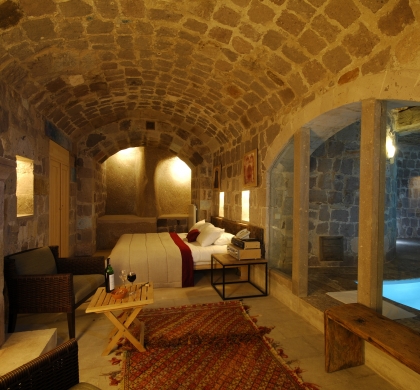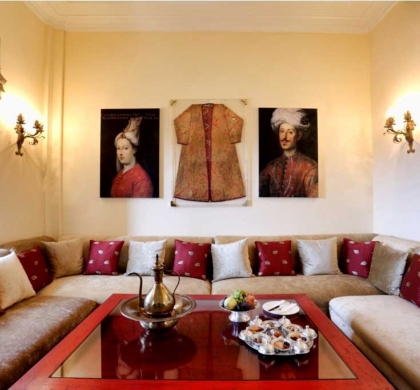Buy or gift a stand-alone digital subscription and get unlimited access to dozens of back issues for just £18.99 / $18.99 a year.
Please register at www.exacteditions.com/digital/cornucopia with your subscriber account number or contact subscriptions@cornucopia.net
Buy a digital subscription Go to the Digital EditionThis brilliant feline carving, dating from the ninth millennium BC, is one of the earliest pieces of religious art ever discovered. And it suggests that civilisation itself was born in the foothills of the Taurus Mountains
Nevali Çori and Göbeklı Tepe are scarcely household names. But it was here, on these two sites in southeastern Turkey, that Professor Harald Hauptmann and his colleague the late Dr Klaus Schmidt of the German Archaeological Institute in Istanbul uncovered neolithic communities of such startling sophistication that they were to revolutionise our view of the birth of civilisation.
In the period after the Ice Age, between 12000 and 10000 BC, the changes in the Earth’s climate and its geology were dramatic. Anatolia’s chain of volcanoes, including Mt Ararat, was active, and everywhere new lakes, rivers and seas came into being. One such small inland lake would eventually become the Black Sea when, 4000 years later, Mediterranean waters forced their way northwards to create the Dardanelles and the Bosphorus. Meanwhile, the northern Adriatic flooded, and the English Channel was created.
As the glaciers receded and the earth warmed, man took a giant step forward. He had survived the extreme cold of the Ice Age as a roaming hunter-gatherer, following the migration of animals and subsisting on what nature had to offer. But as plants, bushes and trees sprang up in valleys and on hillsides which had been snowbound for some 70,000 years, he was able to embrace a new way of life.
From gathering wild grains, such as millet and spelt (species of wheat), man gradually learnt how to grow crops and to domesticate animals – sheep, goats, pigs and, later, cattle. Families, or tribes, settled as farmers and stockbreeders. And with settled living came the ability to produce and store food. Trading, stone-carving and building places of worship followed as did the gradual dissemination of this new way of living. The received wisdom is that these first settlements occurred in the Fertile Crescent stretching from Sinai to the Persian Gulf and spread outwards across the Taurus Mountains into the plains of central Anatolia. But, from excavations of Neolithic settlements in Anatolia over the past 20 years, we now know that the gradual shift from hunter-gatherer to settled farmer was taking place in the hilly fringes of upper Mesopotamia, between the upper reaches of the Tigris and Euphrates rivers and the foothills of the Taurus, at the same time as in the Levant further south. Here there was enough rainfall to produce grassland and light woods of oak, pistachio and almond – a hospitable landscape for the earliest settlers. By the tenth and ninth millennia BC, the first settlements with permanent dwellings had already developed.
But this period of transition from glacial to temperate, from hunting to breeding and from foraging to farming, so crucial to our understanding of the origins of civilisation, remained terra incognita until the 1960s. This was a time of upheaval in the archaeological world. The British archaeologist James Mellaart was making his ground-breaking discoveries at Çatalhöyük, the central Anatolian settlement dated from 7000 BC, with its cult of the Mother Goddess. Further east, the even older settlement of Çayönü – near Diyarbakır, in the basin of the upper Tigris river – was beginning to be excavated by the Turkish archaeologist Halet Çambel of Istanbul University and Robert Braidwood of the University of Chicago. Çayönü was the oldest settlement then known: it had been lived in without interruption for 3,000 years from 10000 BC. In the excavations between 1964 and 1991 Çayönü revealed its inhabitants’ progression from simple circular huts to large permanent stone buildings…
Equally eye-opening have been more recent excavations at two sites in the area by Professor Hauptmann and Dr Schmidt, working closely with the Şanlıurfa Archaeological Museum. These have revealed just how central art, ritual and religious symbolism were in late Neolithic communities. Nevali Çori, an 8500 BC settlement on a tributary of the Euphrates now engulfed by the Atatürk Reservoir, came to light in 1983. Göbekli Tepe, dating back to the end of the 10th millennium BC, was not excavated until 1995. On these sites were found the earliest known examples of religious architecture in the world, monumental buildings with massive decorated pillars (the Sumerian temples, it is worth recalling, were not constructed until 5,000 years later).
The people of Nevali Çori and Göbeklı Tepe were without doubt extraordinarily accomplished. Though strangers to pottery, they knew enough about metalworking to produce copper beads; they designed sophisticated air-cooled structures; and, with their powerful sculptures of snake-men and bird-women, they created the first religious art.
The buildings and artefacts in this article reflect merely the start of excavations in this area…
In Turkey ‘muhallebi’ forms part of everyone’s diet, from babies to grandmothers, for it is wonderfully nourishing. It has two essential ingredients: pure starch - whether from the flour of rice, wheat, corn or potatoes - which is entirely digestible: and milk, which is rich in protein, calcium and vitamins.
More cookery features
The Camondo family, once dubbed ‘the Rothschilds of the East’, amassed a fortune in Turkey before moving to Paris in 1869. There, in the rue de Monceau, they established an exquisite collection of 18th-century French art, which was bequeathed to the nation in 1935. By Patricia Daunt with photographs by Jean Marie del Moral.
Mount Ida (Kaz Dağı) is a paradise for wild flowers. Martyn Rix prospected the area from cool, damp north to hot, dry south. There he found and photographed dwarf flax, giant hogweed – and plants that grow nowhere else in the world
Emin Barın created an entire new language for calligraphy. Elizabeth Meath Baker reports






Cornucopia works in partnership with the digital publishing platform Exact Editions to offer individual and institutional subscribers unlimited access to a searchable archive of fascinating back issues and every newly published issue. The digital edition of Cornucopia is available cross-platform on web, iOS and Android and offers a comprehensive search function, allowing the title’s cultural content to be delved into at the touch of a button.
Digital Subscription: £18.99 / $18.99 (1 year)
Subscribe now